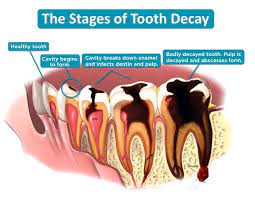Revolutionizing Dental Practice: 3D Printing in Dentistry
The advent of 3D printing technology has revolutionized various industries, and dentistry is no exception. With its ability to create highly accurate and customized objects, 3D printing has found widespread application in the dental field. From fabricating dental models to producing prosthetics and appliances, this innovative technology is reshaping the way dental professionals deliver care and improving patient outcomes. In this blog, we will explore the diverse applications of 3D printing in the dental industry and delve into its transformative impact. Let's embark on a journey into the world of 3D printing in dentistry.
-
Customized Dental Models and Surgical Guides: 3D printing allows dental professionals to create precise and patient-specific dental models. These models serve as invaluable tools for treatment planning, allowing dentists to visualize the patient's unique oral anatomy and design personalized treatment strategies. Additionally, 3D-printed surgical guides enhance the accuracy and efficiency of implant placement, ensuring optimal results and minimizing procedural risks.
-
Dental Restorations and Prosthetics: The dental laboratory workflow has been significantly enhanced by 3D printing technology. Dental restorations, such as crowns, bridges, and veneers, can now be fabricated using digital design software and 3D printers. This approach offers several advantages, including enhanced precision, faster turnaround times, and improved aesthetics. Moreover, 3D printing enables the production of lifelike prosthetics, such as dentures and orthodontic aligners, resulting in better fit, comfort, and overall patient satisfaction.
-
Biocompatible Surgical Guides and Implants: In the realm of implant dentistry, 3D printing has revolutionized the creation of biocompatible surgical guides and implants. These guides aid in precise implant placement, ensuring optimal positioning and alignment. By utilizing patient-specific anatomical information, 3D-printed implants can be custom-designed and manufactured to achieve a perfect fit and improve treatment outcomes.
-
Orthodontics and Aligners: 3D printing has brought significant advancements to orthodontics, especially in the realm of clear aligner therapy. With digital scanning and 3D printing, orthodontic aligners can be custom-designed and produced with exceptional accuracy and efficiency. This technology allows for more comfortable aligners, better control of tooth movement, and reduced treatment duration, ultimately providing patients with a more convenient and effective orthodontic experience.
-
Dental Education and Training: 3D printing technology has also revolutionized dental education and training. Dental schools and training programs now utilize 3D printing to create lifelike dental models and simulators, allowing students to practice various procedures and enhance their skills in a realistic setting. This hands-on experience prepares future dental professionals for real-world challenges and contributes to improved patient care.
Conclusion: The integration of 3D printing technology into the dental industry has unlocked a realm of possibilities, transforming the way dental care is provided. From customized dental models to precise surgical guides, dental restorations, and orthodontic aligners, 3D printing has improved treatment accuracy, efficiency, and patient satisfaction. As this technology continues to evolve, its applications in dentistry will expand even further, driving innovation and enabling dental professionals to deliver exceptional care. Embracing the potential of 3D printing in dentistry promises a future where personalized and precise oral healthcare becomes the norm, benefiting both dental professionals and patients alike.



